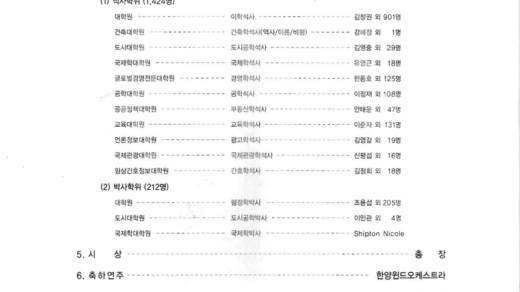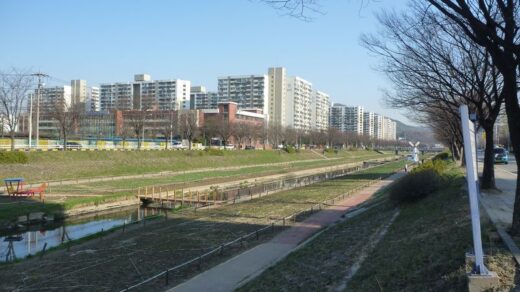** Visit the related discussion on Korea Business Central: “How Should I Translate My Director Job Title to Korean?” [EXPIRED LINK REMOVED: http://www.koreabusinesscentral.com/forum/topics/korea-business-tip-how-should-i-translate-my-director-job-title-t]
** For more information on Korean company hierarchy, refer to my executive report: “Succeed in Korean Business by Understanding Company Hierarchy”.
* If you need help translating job titles for business cards within your organization, I’m here to help. Not only can you download my “Definitive Guide to Korean Business Cards”, but my team and I also provide premium end-to-end translation and layout of English business cards to Korean. Check out the information here about these professional services.
——
Having translated hundreds and hundreds of business cards into Korean over the years, my team and I have come across our share of tricky job titles.
A leading candidate for most-difficult-to-translate title is “director”. The main reason for this is that, in the West, we use the English job title “director” for various positions that each have their own unique terms in Korean, and some of those jobs don’t correspond exactly with specific positions found outside Korea.
The discussion below illustrates why context means everything in translation and in the interpretation of those translations. It’s also an interesting study in just how different two languages can be and why a simple translation question does not always have a simple answer.
이사
The most straightforward translation of “director” is 이사. When “director” is mistranslated, this is the term most commonly used. But 이사 has a pretty narrow meaning that signifies a certain position within a traditional corporate hierarchy or a place on the board of directors.
In a company structure where the director is above a manager and general manager but is also lower than a vice-president and president, 이사 is a good translation for “director”. However, keep in mind that within this corporate hierarchy and still below the level of vice-president and president, “executive director”, “managing director” or even “senior managing director” would be translated to 전무, 전무이사 and 상무이사, respectively.
이사 also works for a member of the board of directors (이사회). But if emphasizing that someone is a member of the board of directors, a more complete translation is 이사회 위원. With this logic, the “chairman of the board” would be 이사회 위원장 or just 이사회장, but this translation applies to a Western conception of a board of directors. In a Korean corporation, the head of the company, usually the president (사장), serves also as chairman of the board, and this person’s title as chairman of the board is properly translated to 대표이사 in Korean and translated back to English as “representative director”. Thus, translating “chairman of the board of directors [in a Western company]” to Korean as 대표이사 indicates a role which does not a match the role and responsibilities of that position in a Korean context; in this case, it would be better to stick with 이사회 위원장.
장 or 총장
When translating “director” to Korean for a job position outside of a traditional corporate hierarchy but which has responsibility for directing an organization, it is usually necessary to pick from a variety of alternatives that end in 장. The meaning of 장 can be inferred from the way Koreans often translate these positions back to English using the word “chief” or “head” of such-and-such organization.
The director of a study institute (학원) would be 원장. The director of a medical clinic or hospital (병원) would also be 원장 (and frequently refers just to the doctor, if a small clinic). The director of a committee (위원회) is 회장, which is also the word used for the chairman of a group of companies (such as the guy who runs the Samsung empire) OR the person charged with leading a small group of people who meet on a regular basis for various purposes OR even sometimes, the kid picked to be class president at school.
The director of an office of some sort (say, a quasi-governmental office in charge of attracting foreign investment) would be 실장, 소장, 센터장, 협회장, 부장 or 국장, depending on the characteristics of the respective organization. These Korean titles roughly correspond to whether we’d call the place an office (실), a center (센터), a committee/commission (위원회), an association (협회), a department (부) or an agency (국). Note that the director of a research institute (연구소) would also be 소장; in addition to its role here, 부장 is also a specific position in the traditional corporate hierarchy directly below director and best translated as “general manager”; and the director of a larger government office at the level of 청 should be translated as 청장.
Another variation arises in this context when “executive director” is used in English rather than just “director” even though both titles would be suitable to describe the holder of the title as being in charge of an organization. In this case, “executive director” is a bit grander of a title and to communicate this same nuance in Korean, 장 could become 총장. For example, the director positions of international organizations such as the World Bank are generally translated as 총장 (as is the chancellor of a university). In fact, 총장 comes in various additional flavors, including 사무총장 (secretary general, but really no different than executive director), 사무국장 (secretary-general or director), 참모총장 (chief of staff) or attorney general (검찰총장).
I should point out that adding 장 to the end of a Korean job title does not mean it always corresponds to an English job title with the word “director” in it. We’ve got quite a few positions in English that could be akin to director but have their own specific terms: dean of a university (총장), principal of a school (교장), class president (회장 or 반장), president of a company (사장), police chief (경찰서장), mayor (시장), county commissioner (군장) and many others, such as the multiple non-director job positions in the traditional corporate hierarchy (manager (과장), deputy general manager (차장) and general manager (부장)).
감독
The term 감독 is used primarily in the arts for job titles like music director (음악 감독), art director (미술 감독) or movie director (영화 감독). However, it is just as common here to use the Korean transliterations of the English words, as in 뮤직 디렉터, 아트 디렉터 or 무비 디렉터.
In a business context, a project director could be translated to 프로젝트 감독 or 프로젝트 디렉터.
Others
A choir director would be best translated as 지휘자. This is the same word used for an orchestra conductor, and though we have separate terms in English, the roles are similar and Korean doesn’t distinguish.
The term 중역 literally means “heavy role” or a person performing an important role. It’s used sometimes when talking about the top executives in a company, and this can occasionally be a suitable term for director, including a member of the board of directors.
One more “director” title that deserves special mention is “program director”, as in the person who puts TV shows together. This job title is universally used in Korea as “PD” (i.e. the English letters P and D).
The dictionary lists “심의관” as both “Director-General” and “Deputy Director-General” in the context of a court or patent review office. I guess the “Deputy” part depends on context.
Finally, if all else fails, just transliterating the word “director” to Korean as 디렉터 is a quick-and-dirty translation that is never outright “wrong”, though it wouldn’t be as right as picking the right term from the discussion above.



